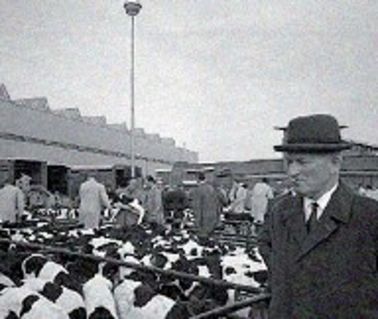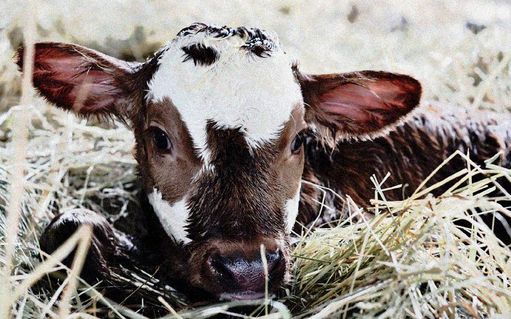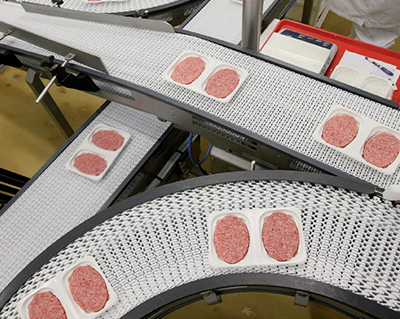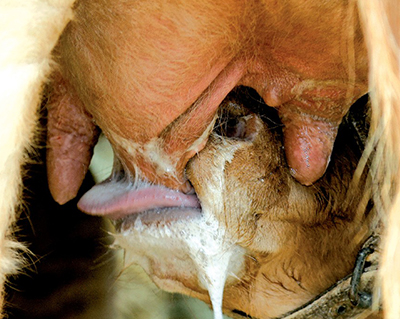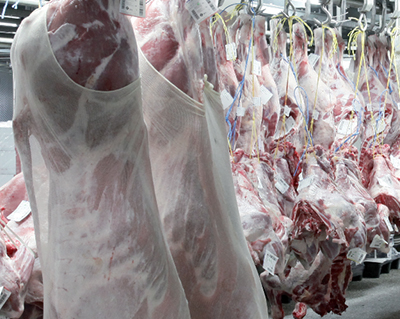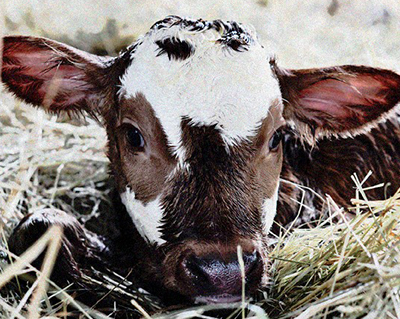In the European countries that still produce veal like France, the newborn calf is still referred to as veau à huit jours, literally the eight-day calf. Nowadays however, these newborn calves are protected by European legislation, dictating that all calves must stay with their mothers and be given as much colostrum as possible for a minimum of 14 days.
Every year, approximately 28 million of these calves are born within the European Union. Half of them are male, for which the farmer has little use, and the other half are female. These are often sent to market rather than being kept as dairy cows. The reason being, that not all female calves have the potential of becoming good dairy cows, and that farmers need to restrict the ever-increasing number of animals in their stock. So of the 28 million calves born every year, 20% are destined for calf rearing farms.
These young calves destined for calf rearing farms are collected from the breeders after fourteen days. From there, they are transported to either a regional cattle market or a collection centre where they are put through a selection process. At this stage, it is quite important to ensure that the calves are matched, as much as possible, into groups. The classifier makes an accurate assessment of each calf and classifies them according to the EUROP grid. E is a calf with the most growth potential; P has the least. A lot of this depends on what kind of breed it is. Calves that are bred for their meat, and dual purpose cattle breeds generally have more growth potential than calves bred for the dairy industry. Of course there is also a difference in price. True meat breeds are Limousin, Charolais, Blonde d'Aquitaine, Piemontese, Hereford, Galloway, Chianina, Aubrac, Black Angus and Gasconne. Strategic breeding has also established meat breeds with higher ratios of meat to carcass like the Belgian Blue. Dual purpose breeds are kept for their milk and meat. Examples of these are Meuse-Rhine-Yssel, Salers, Normande and Montbeliarde. True dairy breeds with meat that is inferior to their milk production are: Holstein, Guernsey and Jersey.
Just to illustrate, on one quite random visit to the cattle market in Chateau-Gontier (Brittany) in 2012, we saw considerable price discrepancies in the new arrivals. A Charolais bull calf weighing 60kg cost 365 euros. A Holstein bull of the same weight cost 105 euros and a dual purpose Normande bull calf cost 200. This just goes to show why the veal sector chooses to buy the calves produced in the dairy industry. Bull calves from breeds of beef cattle are mostly reserved for the production of beef, not veal.
Unfortunately, cattle markets like these are few and far between, especially since the outbreak of foot and mouth disease in 2001. The majority of the trading is done digitally which has taken away the nostalgia, along with new techniques for classification. There is just no way anyone would buy veal calves which have not been inspected and classified. These days it is up to independent classifiers to divide the livestock and ensure the buyers know what to expect.
For anyone looking to experience an authentic cattle market, we can recommend the French markets of Chambéry (Savoye) and Saint-Laurent de Chamousset (near Lyon) on Mondays, Brive (Corrèze), Objat (Limousin), Soligny-la-Trape (Orne) and Desvres (Pas-de-Calais) on Tuesdays, Neufchatel-en-Bray (Normandy) and Saint-Hilaire-du- Harconet (Manche) on Wednesdays, Château-Gontier (Mayenne) and Saint-Gaudens (Pyrenees) on Thursdays and Laugogne (Lozère) on Saturdays.
Once the calves have been classified, they are transported long distances in Comfort Class cattle lorries to a variety of collecting points, assembly centres and farms, dealers’ and hauliers’ yards, where they are sorted and housed in special stalls.
